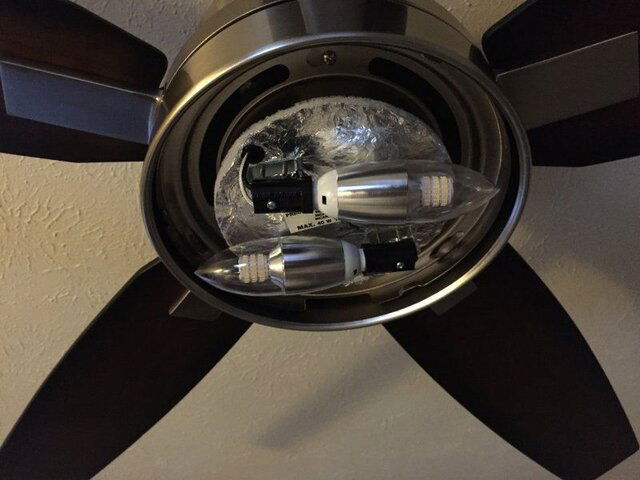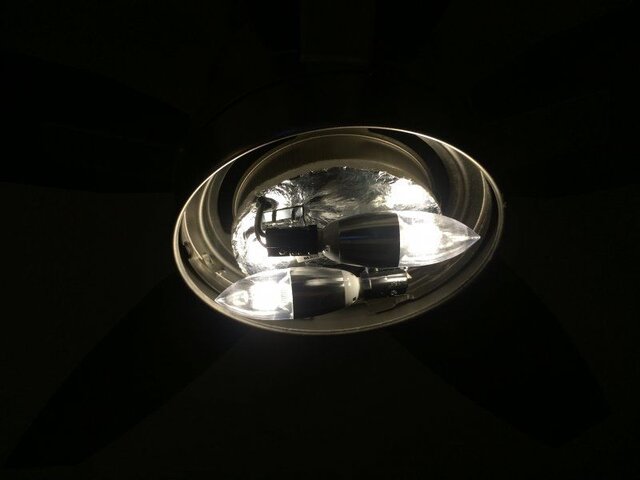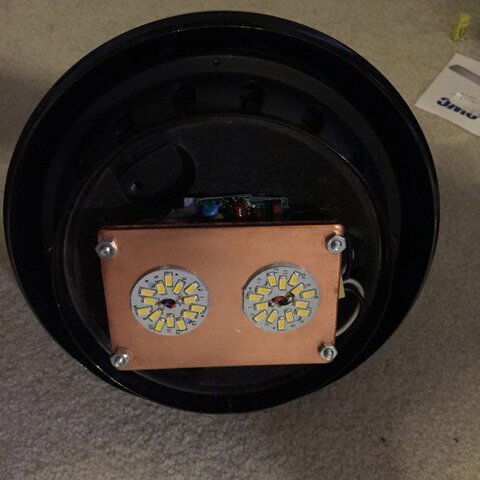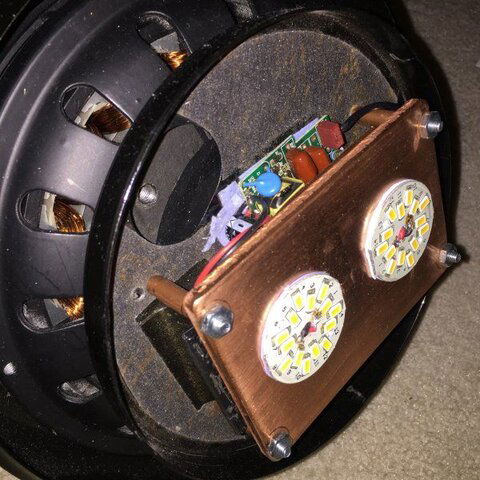Since I caught hell for resurrecting a two-week old thread, I can't wait to see how my post is received

Two items regarding LED lighting. First, I picked up some Feit T-8/T-12 fluorescent replacements that work with electronic and magnetic ballasts. I replaced a pair of T-12 bulbs in the basement and I was blinded by the light (yeah, the old bulbs were at least 25 years old!). I bought two at my local Ace Hardware for $25 a pop, but found the same bulbs (Feit T48/841/LED) on Amazon so Scott can get a little kickback. I almost got the ballast bypass model as the price was the same, but these use two Watts less per fixture (17W v 18W per bulb). Of course, I may be regretting that if it turns out by leaving the ballast in the circuit that it consumes more than 2 W! But installation was as simple as plugging in the new bulbs in the old sockets, making sure the LEDs face downward. They are adjustable so it might be something to tweak by pointing the bulbs slightly. Just pull out on the end caps and rotate to the desired orientation. Pretty slick!
With that said, it's time to address a Safety issue. A little over a year ago I purchased four off-brand LED 60W equivalents from Menards. I can't tell you the brand since the light bulbs do not have a manufacturer logo or stamp on them. They were stamped "9W.WW DIM" and "AC 90-120V M-24" and had a waffled heatsink base between the Edison threads and the frosted bulb. We have a brass floor lamp that features three bulbs circling the center bulb connected to a 1-2-3 switch, and then a single bulb in the center driven by the normal twist-on, twist-off switch. I put all four bulbs in this lamp. There is absolutely no impedance to air flow so what happened next I chalk up to cost-cutting.
After 9 months or so of use my son lets me know that the lights are flickering and cutting on and off, and one bulb is making sparking noises. I removed the bulbs and to my surprise, I see that the plastic insulator between the tip and the screen base is in pieces and discolored. I pull all the bulbs and see similar damage to two of the other bulbs. I set them aside since I can't very well return them since I have no idea who makes them and if I went to Menards and said they're selling crap, I don't expect it would go well, especially without a receipt.

So, fast-forward to a couple of weeks ago and I get around to tearing apart these damaged no-name light bulbs. The first surprise came in discovering that the frosted bulb was not plastic, but actually frosted glass! Fortunately, I did not slice up my hands as I was wearing work gloves, but WTF?!? I guess I needed a Glass Cuter anyway (hence the trip to the Ace Hardware) so I could have a fighting chance on dismantling the rest. I'll fast-forward through the process, but in a nutshell, it's score the glass bulb around the base, use the nob-end of the glass cutter to get the glass to crack along the etch marks, then using a knife to cut through the silicon caulk used to hold the glass to the base. Pry up on the LED module, cut the feed wires, unscrew the LED Driver electronics module, and loosen the Edison base so the wires can be removed. Then, it comes apart pretty easy.
Those who know me know my favorite Electronics projects revolve around bad capacitors. Well, why should this be any different? Here's the one board form the totally dead bulb:
The 330µF 25V electrolytic capacitor is toast. It blew and the discoloration of the circuit board above it is where something sizzled. I tested the fuse and it had blown, protecting us from further chance of fire.
Amazingly, the following board and bulb still functioned, other than the lights flickering like crazy:
The rubber end cap blew completely out of the aluminum can! Below it is a replacement 330µF 35V replacement capacitor. The yellow connectors in upper-left are a Luminaire Disconnect that I harvested from work.
I picked up some high-temperature silicone wire/plug assemblies since the LED module can get above 75?C. So, end result, I now have three harvested LED modules with LED drivers:
Just need a good heatsink to prevent the LEDs from destroying themselves. I'm thinking of using these either in a ceiling fixture or as a light kit in a ceiling fan.
So, cautionary tale. If you get a great deal on a LED bulb, pull it out after six-nine months and see how the materials are holding up. There should be no degradation of the insulation. I'm sticking to GE, Philips, Osram, Sylvania, or Feit.








